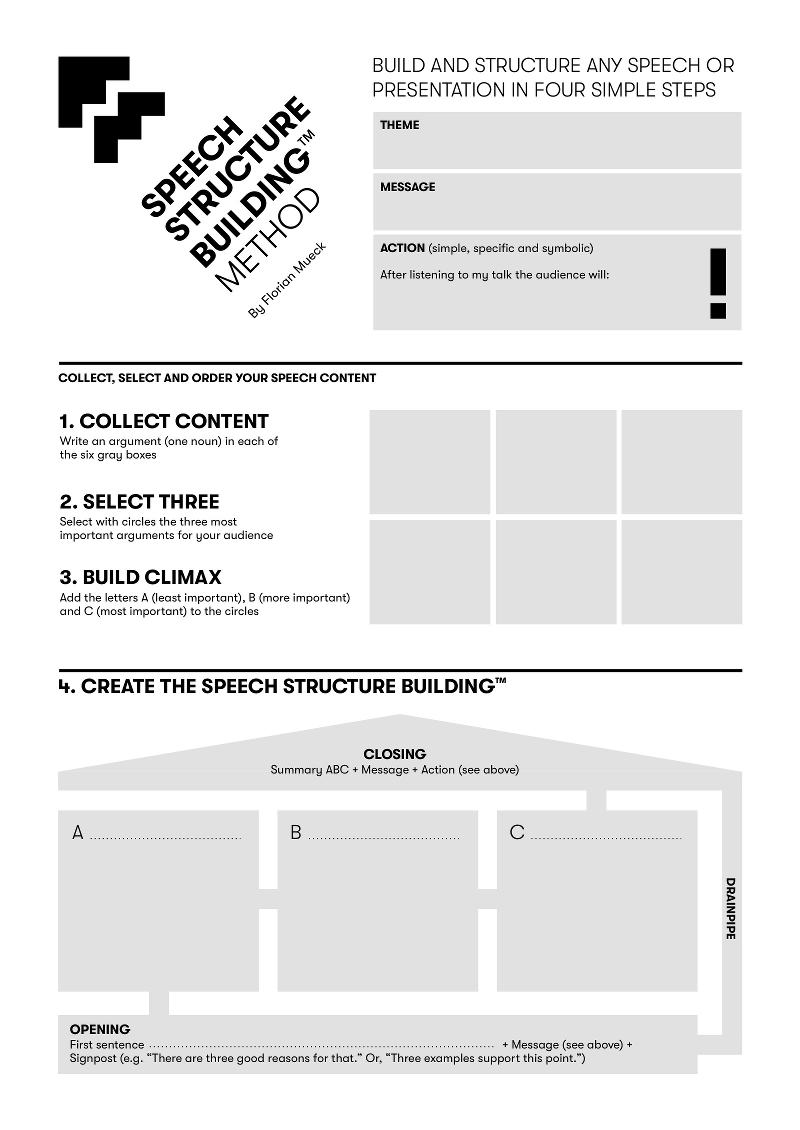When I started my professional journey with my first test training in Barcelona in July 2009, I already had one thing in place. One thing that has become my signature exercise.
I’m German. We Germans we love cars; we love beer, we love… structure. No wonder that I just had to come up with a special exercise on speech structuring.
Aristotle said that, A whole is that which has a beginning, middle and end. Nothing has changed in 2,300 years. In my 8th grade essays at school, I also had to follow Aristotle’s advice.
For the speech structure, I came up with the visualization of a Greek temple. A Greek temple has a foundation (beginning or opening). It has pillars (middle or speech body). And it has a roof (end or closing).
What Greek temples don’t have is the fourth and secret element of my Speech Structure Building™ – the drainpipe.
My friend from down under Mark Hunter, 2009 World Champion of Public Speaking says, What makes the speech structure building special is the drainpipe.
After five and a half years, I finally put all my speech structuring know-how into one page. This one-pager will help you tremendously with structuring your ideas and creating a speech in literally no time.
No more excuses! Wedding speeches, anniversary speeches, farewell speeches – no problem with the Speech Structure Building™ method. I’m delighted to answer any further questions you might have.
Click the image below to download the Speech Structure Building template (PDF):


Arjun Rajagopalan
Much as most of us dislike the concept of putting a speech into a rigid grid, the principles outlined in this Grecian framework are sound and well worth using, particularly for the novice and/or nervous speaker. Having a solid structure to your talk removes a significant portion of the anxiety. And, remember, the more causal and extempore a speaker sounds, the more it is likely that he or she has thoroughly rehashed and rehearsed it.
florian mueck
Arjun, thank you for your great comment. Once in a training, a participant said to me, “But if everyone uses this structure, then it’s also boring.” I responded, “Start with the structure, get used to it, later become more creative.” But in the end, we’ll always end up where we began… with Aristotle’s logos-based speech structure. It just works.
oscar.li
it is a great guideline about speech skill.
how to define the message, what’s relationship between message and theme?